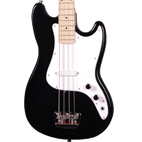
The sound had that even, 'ringing' characteristic that you get from the best tube amps, but without any of the noise or distortion. Tested with my Fender Strat Plus, the DI'd guitar tone was clean, articulate and responsive, with a lot more tonal change between the different pickup switch settings than you might expect. Most mixer‑line inputs have a 47kΩ input impedance, so this shouldn't be a problem, though it does mean that you can't go in via your mixer's mic inputs.
ULTIMATE GUITAR JUICEBOX BASS MANUAL
Background noise is better than 90dB, with 18dB of headroom before clipping - though the manual points out that any connected mixer shouldn't present a load of lower than 10kΩ if the full gain range is to be realised. Valve gear is credited with all kinds of magical properties, but in this design the distortion is kept to a very low 0.05%, and any impression of clarity is more likely to be due to the fast transient response that results from a 10Hz‑100kHz frequency response.

The mains lead is captive, and a small toggle switch is used for the mains power, while a status LED indicates that the unit is powered up. Power comes from a torroidal transformer, and a recessed selector switch allows 110V or 220V operation. The case is perforated to allow cooling and the design purports to conform to the EEC's EMC directive, though there's no CE mark, and I doubt the ventilation slots would pass the 'granny with a hat pin' test for electrical safety. In practice, this isn't really going to matter unless you use two devices to DI a stereo signal, then for some reason set one unit to 0dB gain and the other to +20dB gain - hardly a likely eventuality.Ĭonstructionally, the Juice Box is impressively tough, appearing to be built from 1/8 inch sheet steel. Retrospec have obviously hedged their bets on the XLR wiring protocol, because they carefully explain the origins of the NAB pin‑3‑hot and IEC pin‑2‑hot systems, then go on to deliver both! When the ‑20 or 0dB gain settings are engaged, the output is pin 3 hot (the opposite way to the AES/IEC standard), but when the +20 option is selected, an extra valve gain stage is placed in circuit, inverting the phase of the signal and making pin 2 hot.
ULTIMATE GUITAR JUICEBOX BASS PLUS
There's no EQ and no speaker simulators - just a +20/0/‑20dB rotary gain switch and a gain‑trim pot, plus a ground‑lift switch. The circuitry comprises two double triodes in a class‑A circuit (one 12AX7 and one 12FQ7), and the output stage is transformerless. Apart from its all‑tube circuitry, the Juice Box is a conventional instrument DI box, with an unbalanced high‑Z jack input, a unity‑gain buffered output for feeding an instrument amplifier, and a balanced XLR output for recording or feeding a PA console. USA‑based Retrospec build a range of valve products for both live performance and studio use, and the Juice Box reviewed here could be used for either. Paul White turns on the Juice and finds it a perfect excuse to get in his monthly 15 minutes of guitar practice.


 0 kommentar(er)
0 kommentar(er)
